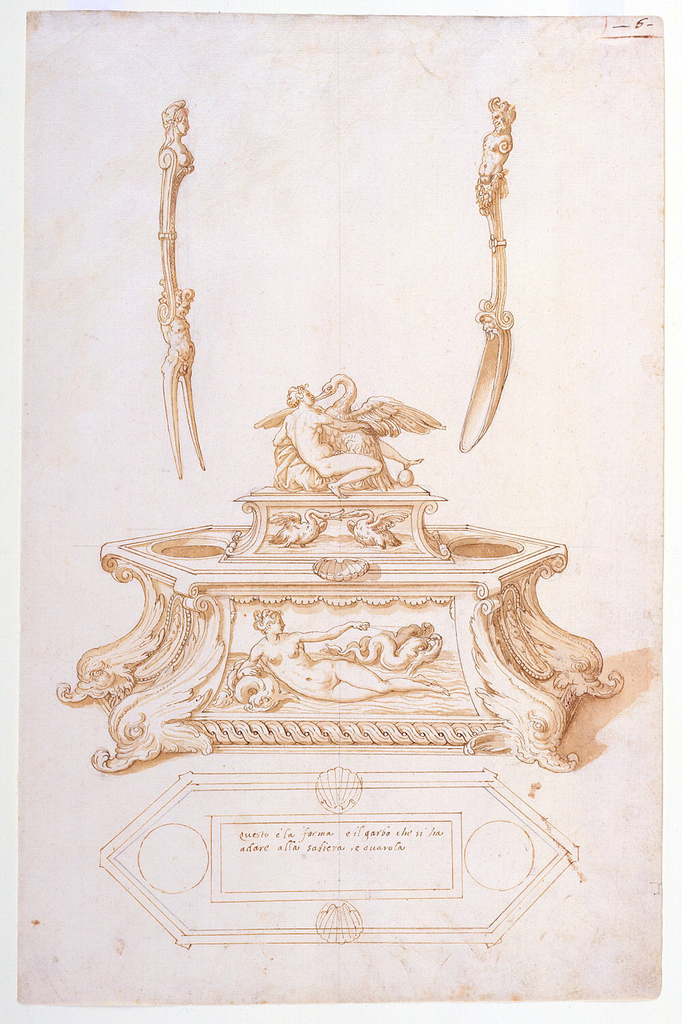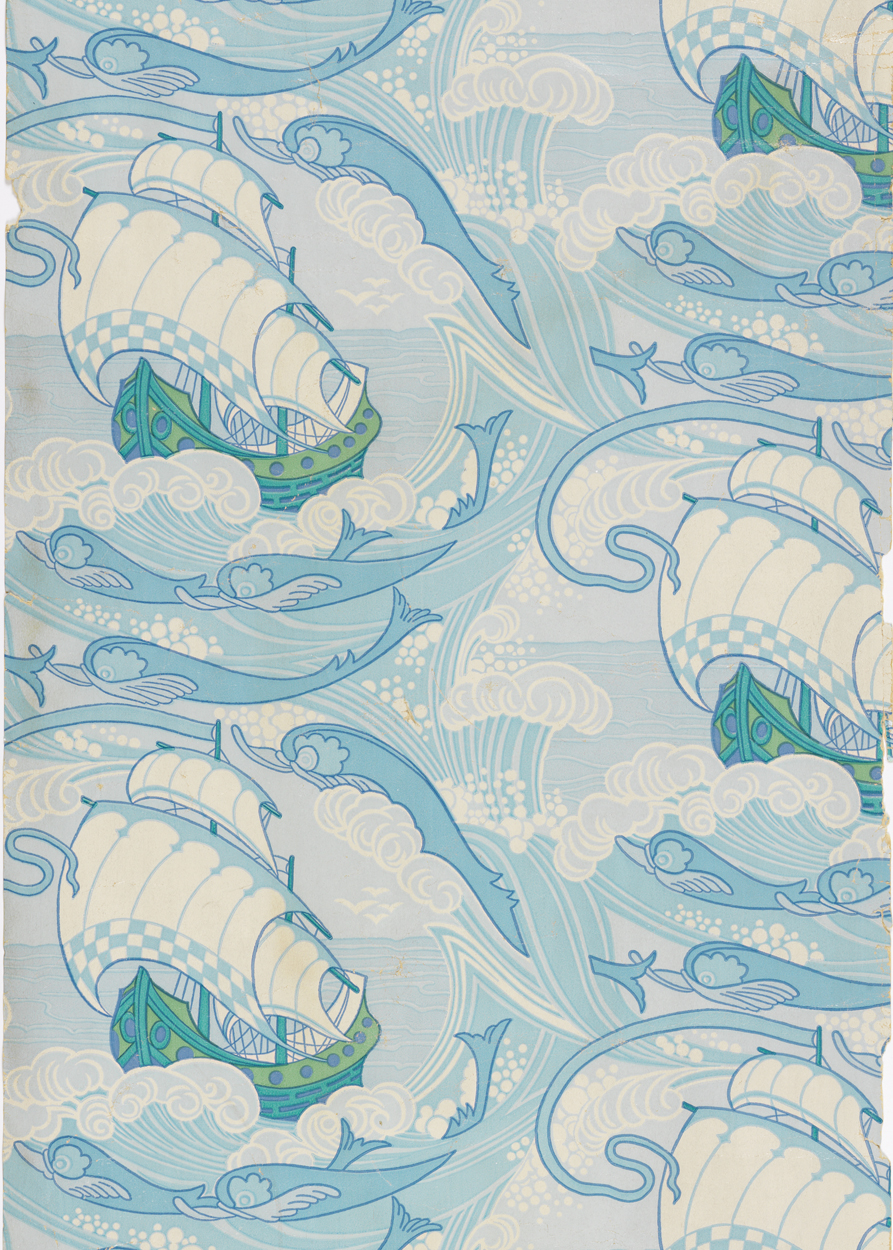Poached, fried, boiled, or roasted, eggs were an important part of the Italian Renaissance diet. In the sixteenth century, Italian chefs Bartolomeo Scappi and Cristoforo da Messisbugo each published cookbooks that detailed recipes and techniques for preparing banquets, and eggs were often on the menu. One of Scappi’s reoccurring recipes was for uovo da bere, or...
This design of tall ships surrounded by dolphins in a turbulent sea was first used as a cretonne design, or printed cotton fabric, produced by Steiner & Co. This was published in The Studio magazine in 1899. The design re-surfaced years later as this sanitary wallpaper. This is a classic pattern for a bathroom, a...

